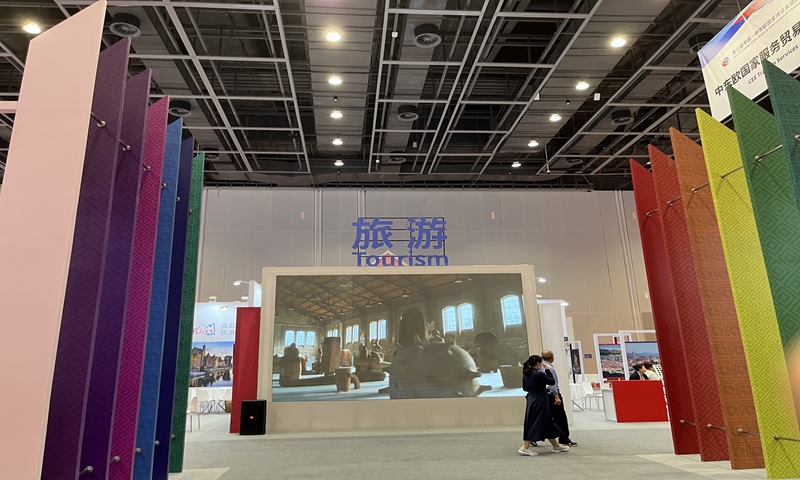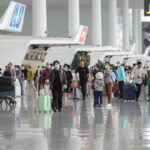Services to become new driver for bilateral cooperation: experts
Tourism agencies and government departments from the Central and Eastern European Countries (CEECs) are gathering in China and stepping up efforts to lure Chinese travelers as the populous country sees a rapid recovery of outbound tourism.
At the ongoing third China-CEEC Expo & International Consumer Goods Fair in Ningbo, East China’s Zhejiang Province, a services trade exhibition area was set up for the first time, gathering exhibitors from tourism, logistics, cultural affairs and other sectors.
Nine tourism promotion agencies from the CEECs showed up at the expo, with staff busily promoting unique and beautiful scenic spots and tours to potential visitors.
“Our company has been focusing on the European and American markets for the past 15 years. At this year’s expo, it is our first foray into the Chinese market,” Stoyan Gegovski, chief representative of the North Macedonia-based Balkan Prime Tours in China, told the Global Times on Wednesday.
The huge Chinese market, or even just part of it such as the Yangtze River Delta region, is more than enough for tourism agencies to explore, Gegovski said. “While the domestic Chinese market is booming, outbound trips have not yet recovered to the level before the COVID-19 pandemic.”
“We plan to enhance promotion through online social media platforms and on-site fairs,” Paula Gumienna, marketing manager of the Polish National Tourist Office in Beijing, told the Global Times.
“One of the current projects we are working on is recruiting some Chinese living in Poland. We’ll invite them to visit different places in Poland and let them introduce those places worth visiting on social media platforms to the Chinese market,” Gumienna said.
“Based on recent internet searches, tourist postings and reviews, we can see that niche destinations in the CEECs have the potential to grow into a big tourism market,” Dai Bin, director of the China Tourism Academy, said at the Second High-level Think Tanks Forum on High-quality Development of China-CEEC Local Cooperation, a sideline forum of the expo.
Chinese tourists’ satisfaction with the CEECs is at a relatively high level among the 102 key sample countries, Dai noted.
In the past decade, the number of Chinese tourists to the CEECs has increased fourfold, with the number of direct flights reaching 30 per week, according to media reports.
In February, China successfully served as the guest of honor at the Belgrade International Tourism Fair, Jiang Yu, the Chinese Foreign Ministry’s special representative for cooperation between China and the CEECs, said at the forum.
Tourism organizations such as the China-CEEC Tourism Coordination Center and the Serbian branch of China International Travel Service are actively building tourist routes and projects for Chinese tourists, based on cities with direct flights to China and centering on Hungary, Greece and other countries in the region with rich tourism resources, Jiang said.
As the host city of the China-CEEC expo, Ningbo is scheduled to add a passenger route to Budapest, Hungary, by the end of May, with one round trip per week, local news sites reported.
Represented by the potential of the tourism sector, trade in services between China and the CEECs is expected to become a new driver for bilateral economic and trade cooperation, experts noted.
Liu Zuokui, a research fellow on European studies at the Chinese Academy of Social Sciences, told the Global Times that more tourism institutions, cultural entities and logistics companies attending the expo show that the cooperation between China and the CEECs has become more diversified.
International trade in services has been booming over the past two years. Market players are optimistic about the development potential of the cultural and tourism industries under China-CEEC cooperation, Liu noted.
China’s foreign trade in services stood at 5.98 trillion yuan ($855 billion) in 2022, maintaining a fast growth rate of 12.9 percent year-on-year, data released by the Ministry of Commerce showed.
Of the total, China’s tourism imports and exports hit 856 billion yuan, up 8.4 percent year on year.
(Global Times)




